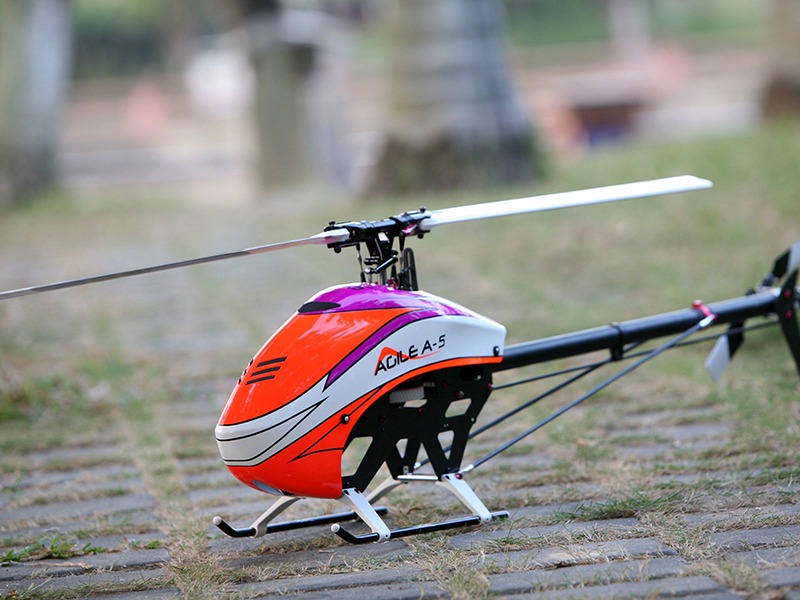What is easier to fly RC helicopter or plane?

The answer to the question of which is easier to fly an RC helicopter or plane is that it depends on the individual's experience and skill level. It is generally accepted that flying an RC helicopter is more difficult than flying an RC plane, but there are some exceptions.
For beginners, an RC plane is usually the easier option to learn. Planes typically have two control surfaces, the elevator and the rudder, which control the pitch and yaw of the plane respectively. On the other hand, RC helicopters have three control surfaces, the main rotor, the tail rotor and the cyclic, which control the lift, yaw, and roll of the helicopter respectively. The additional control surface of the helicopter makes it more difficult to fly than a plane.
However, experienced RC pilots may find that flying an RC helicopter is easier than a plane. This is because helicopters are more maneuverable and can be flown in tighter spaces than planes. This makes them ideal for flying indoors or in confined spaces. Additionally, helicopters can hover in place, which makes them easier to control than planes, which must maintain forward momentum in order to stay aloft.
The type of RC aircraft also plays a role in the difficulty of flying. Fixed-wing RC planes are typically easier to fly than RC helicopters, as they are more stable and less prone to crashing. On the other hand, multi-rotor RC helicopters, such as quadcopters, are easier to fly than traditional helicopters as they are more stable and have built-in gyroscopes that help keep them level.
Ultimately, the answer to the question of which is easier to fly an RC helicopter or plane depends on the individual's experience and skill level. Beginners may find it easier to learn on a plane, while experienced pilots may find helicopters to be easier to fly. Additionally, the type of aircraft can also play a role in the difficulty of flying.
Comments / Question
2. Make sure the area you plan to fly in is free of obstacles and other aircraft.
3. Always wear safety goggles when operating an RC aircraft.
4. Inspect your RC aircraft before each flight to make sure everything is in working order.
5. Start with smaller and simpler models before attempting to fly more complex aircraft.
6. Follow all instructions provided by the manufacturer regarding charging, handling, and flying the aircraft.
7. Avoid flying in bad weather conditions or close to power lines.
8. Always keep your RC aircraft in sight and within range.
9. Fly with someone else who is experienced with RC aircraft.
10. Make sure to obey any local laws and regulations regarding the operation of RC aircraft.
1. Long Range Flight: Fixed-wing aircraft can fly for long distances with little need for refueling or recharging.
2. High Speed: Fixed-wing aircraft can reach higher speeds than other types of RC aircraft.
3. Greater Manueverability: Fixed-wing aircraft have greater maneuverability than other types of RC aircraft.
Disadvantages of Fixed-Wing Aircraft:
1. High Cost: Fixed-wing aircraft tend to be more expensive than other types of RC aircraft.
2. Difficult to Control: Fixed-wing aircraft require more skill and experience to fly than other types of RC aircraft.
3. Limited Flight Time: Fixed-wing aircraft typically have a shorter flight time than other types of RC aircraft.
Advantages of Multirotor Aircraft:
1. Less Expensive: Multirotor aircraft tend to be less expensive than fixed-wing aircraft.
2. Easier to Control: Multirotor aircraft are easier to control than fixed-wing aircraft due to the fact that they rely on multiple rotors for flight stability.
3. Greater Flight Time: Multirotor aircraft generally have a longer flight time than fixed-wing aircraft.
Disadvantages of Multirotor Aircraft:
1. Shorter Range: Multirotor aircraft have limited range compared to fixed-wing aircraft.
2. Lower Speed: Multirotor aircraft typically have lower speeds than fixed-wing aircraft.
3. Limited Manueverability: Multirotor aircraft have limited maneuverability compared to fixed-wing aircraft.

